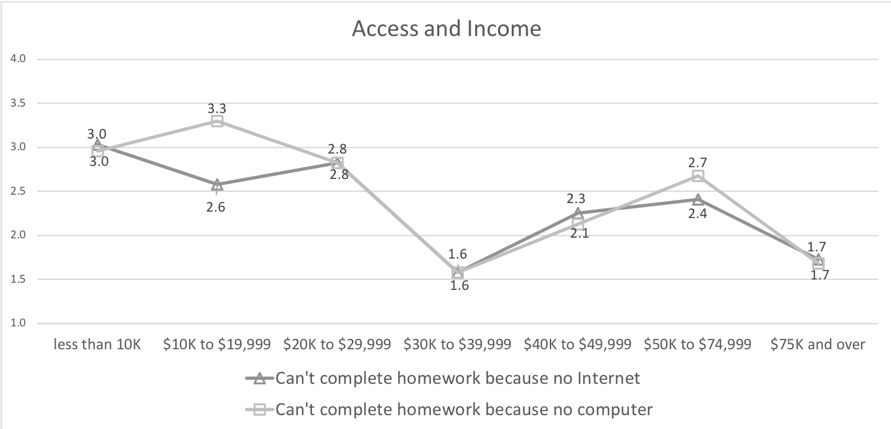As schools rely more and more on digital tools for teaching and learning, concerns over universal access to broadband Internet and computers start to emerge. The homework gap refers to the challenges school-age children experience completing their homework due to lack of access to a reliable Internet connection or working computers. National studies have shown that as much as 15 percent of American children are unable to complete their after-school work because they don’t have access to a broadband connection and reliable computers. Unfortunately, historically underprivileged groups of children are overrepresented in the homework gap space.
As part of the Digital Assessment Project led by Dr. Joseph Straubhaar and Dr. Sharon Strover in conjunction with the City of Austin, a team of UT researchers conducted a study on the homework gap and digital inequalities in Austin. The team included Melissa Santillana, Joseph Straubhaar, Alexis Schrubbe, Jaewon Choi, and Sharon Strover. Their paper titled “Digital Inequalities: Homework Gap and Techno-Capital in Austin, Texas” was published in the special issue Global perspectives on digital inequalities and solutions to them in the peer-reviewed journal First Monday.
We investigate the cultural, social, and technological aspects that contribute to the homework gap. The results are based on data from a survey conducted in collaboration with the city of Austin, Texas and several non-profit organizations that offer Internet and technology services to disadvantaged communities. We found that parents with lower income and lower levels of education experience higher levels of homework gap. Age turned out to be an important predictor of the homework gap in the sense that older parents are more likely to perceive higher levels of inequity. When it comes to digital literacy or technological skills, parents who lacked intermediate levels of technological skills were more likely to report that their children were unable to complete homework due to lack of Internet and/or computers.
Read full paper here
(Figure: Mean plot of homework access and income. Note: *1= strongly disagree, 5= strongly agree.)

